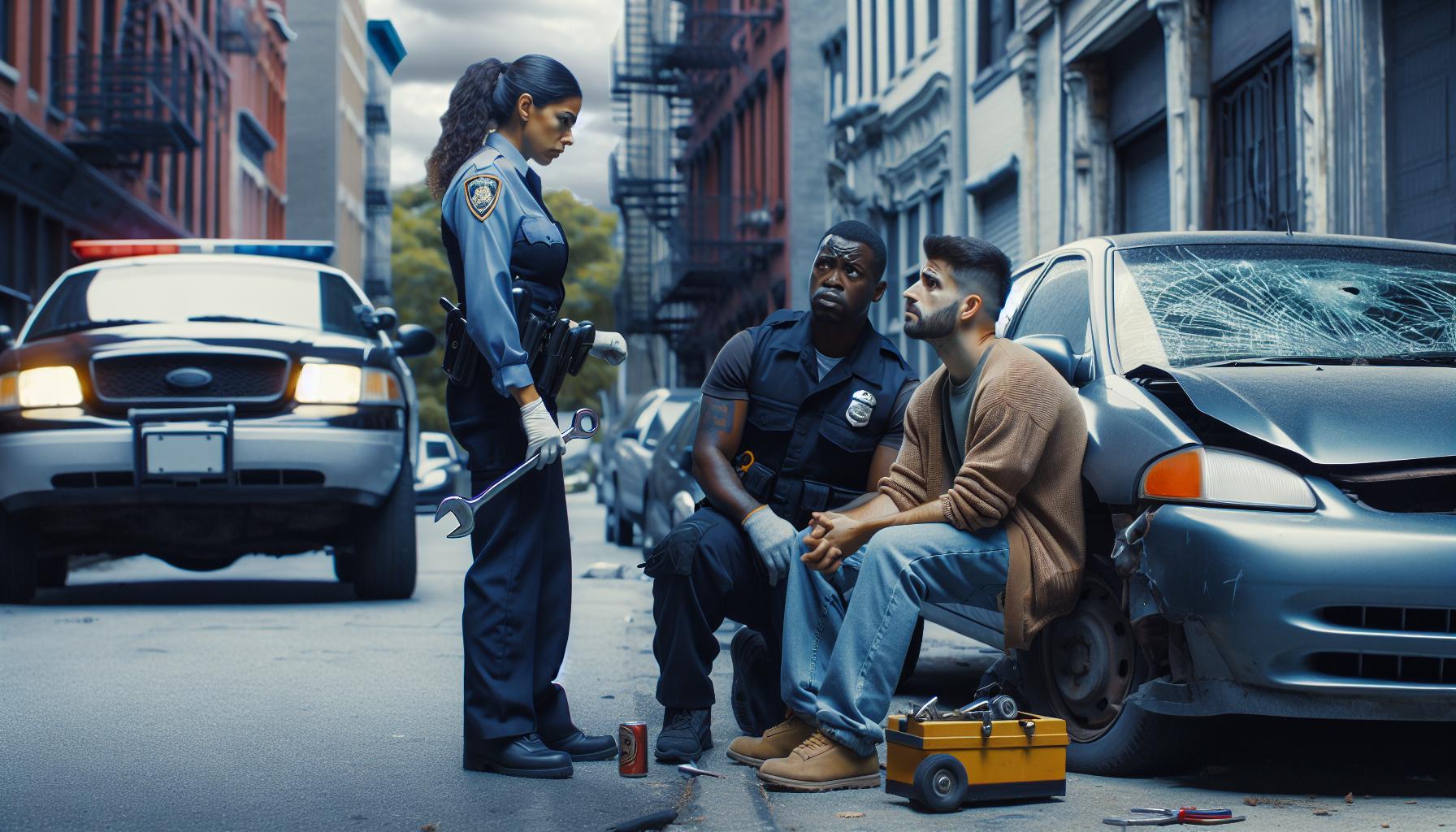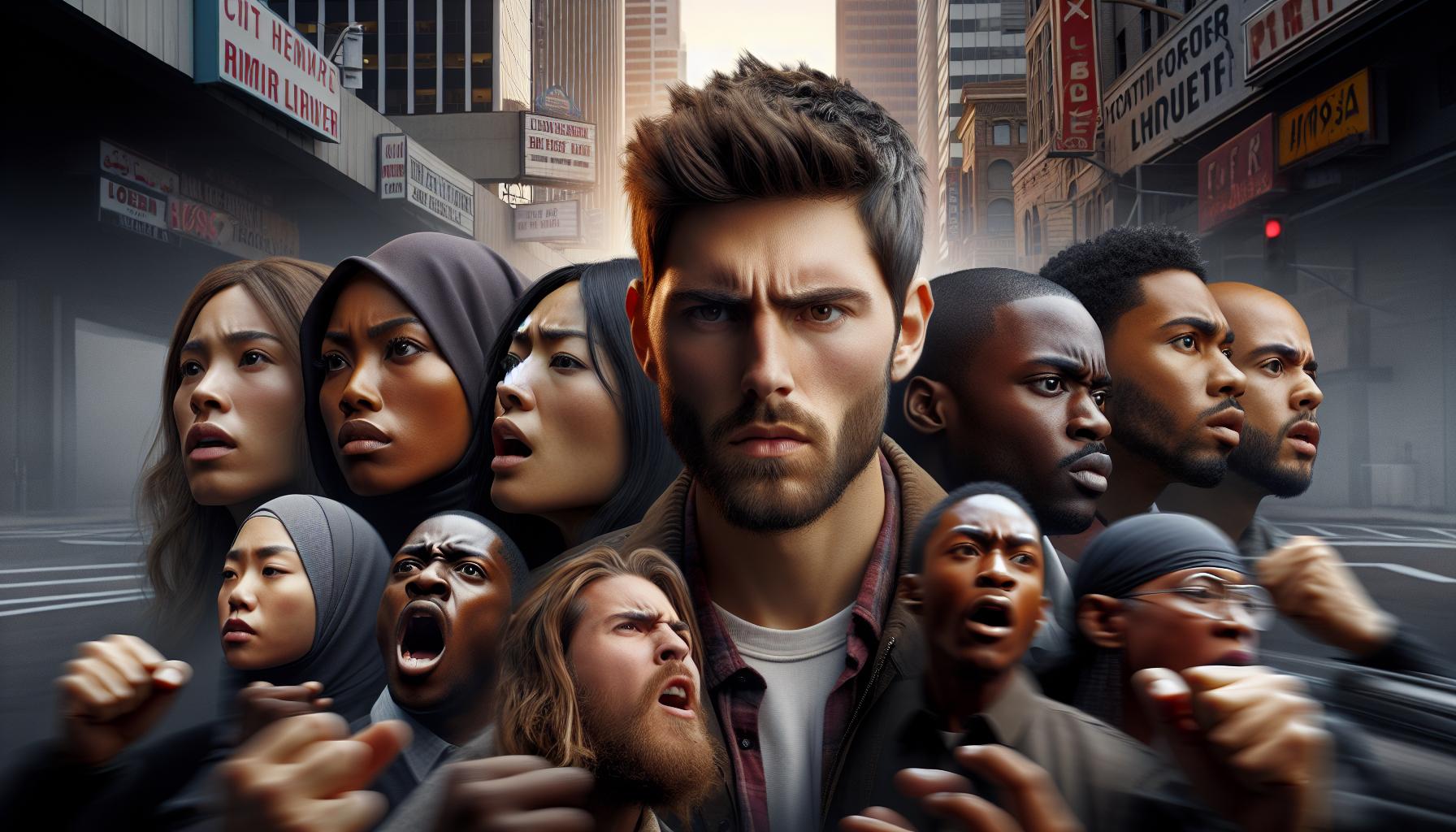Key Takeaways
- Intersection of Narratives: “Crash” intricately weaves multiple storylines that reveal the complexities of race, class, and human relationships, urging viewers to confront their biases.
- Critical Themes: The film explores significant themes such as systemic racism, social connectivity, and the impact of individual choices on society, fostering discussions on understanding and empathy.
- Character Dynamics: Each character represents different social identities, providing a nuanced examination of prejudice and redemption within a racially charged environment.
- Cinematic Techniques: The use of handheld camera work and sound design enhances the film’s emotional depth, immersing viewers in the tense and interconnected experiences of the characters.
- Cultural Impact: “Crash” received mixed critical reception but won the Academy Award for Best Picture, showcasing its ability to provoke discourse on contemporary social issues and race relations.
- Ongoing Relevance: The film’s exploration of intersectionality and personal choices continues to resonate in academic discussions, making it a crucial subject for analysis in film studies.
“Crash” is more than just a film; it’s a powerful exploration of race, class, and human connection. Released in 2004, this Oscar-winning drama weaves together multiple storylines that intersect in unexpected ways, challenging viewers to confront their own biases and perceptions. Through its raw and often uncomfortable narrative, “Crash” invites audiences to reflect on the complexities of society and the impact of personal choices.
Analyzing “Crash” reveals the intricate layers of its storytelling and character development. Each character represents a different facet of contemporary life, sparking discussions about empathy, prejudice, and redemption. As viewers navigate the film’s intertwining paths, they gain insight into the struggles and triumphs that define human experiences, making it a compelling subject for deeper examination.
Crash Movie Analysis
“Crash,” released in 2004, presents an intricate portrayal of racial and societal tensions in Los Angeles. The film interconnects several narratives, each revealing different facets of human interaction and prejudice. Through thought-provoking situations, it compels viewers to examine their perceptions and biases.
The cast includes prominent actors such as Don Cheadle, Sandra Bullock, and Matt Dillon. Each character symbolizes varying social identities and experiences, enhancing the film’s exploration of empathy and conflict. The narrative structure employs a non-linear approach, weaving together multiple storylines to depict the complexity of urban life.
Critical themes in “Crash” include systemic racism, social stratification, and the fragile nature of human relationships. The film illustrates how individual choices impact the broader community, showing the ripple effects of actions and attitudes. By highlighting these connections, “Crash” fosters discussions about understanding and reconciliation in a diverse society.
The film’s award recognition, including an Academy Award for Best Picture, underscores its cultural significance and societal impact. Its compelling storytelling and character arcs encourage ongoing dialogues about race and class dynamics, making “Crash” a crucial subject for analysis in contemporary film studies.
Themes Explored in Crash

“Crash” delves into profound themes that reflect contemporary society, particularly focusing on racial dynamics and social interconnections. The film’s nuanced portrayal encourages viewers to examine their perceptions and relationships within a complex urban landscape.
Racial Tension
Racial tension stands as a primary theme in “Crash,” highlighting the pervasive impact of systemic racism. Characters encounter various stereotypes, exposing their biases and prejudices. For instance, the interactions between characters, such as the confrontations involving a police officer and a driver, depict the fragile nature of trust across racial lines. The film challenges viewers to confront their ingrained beliefs and consider the consequences of actions driven by prejudice. Through stark depictions of conflict, “Crash” emphasizes the urgent need for understanding and dialogue in racially charged environments.
Social Connectivity
Social connectivity emerges as another crucial theme, illustrating the interconnectedness of individual lives. The narrative reveals how seemingly unrelated characters affect one another through a series of serendipitous events. Relationships between characters, such as a couple impacted by a carjacking and a locksmith who aids them, showcase how shared experiences foster empathy. The film suggests that personal connections can bridge divides, promoting a message of hope and resolution despite societal fractures. Ultimately, “Crash” underscores the importance of recognizing shared humanity in a fragmented world.
Character Analysis

“Crash” features a diverse array of characters whose intricate relationships drive the film’s exploration of social issues. Each character serves as a vessel for examining themes of race, class, and human connection.
Main Characters
- Detective Graham Waters (Don Cheadle)
Detective Waters embodies the struggles of navigating personal and professional identities within a racially charged environment. His character grapples with feelings of inadequacy and moral dilemmas while pursuing justice. He illustrates the complexity of human experience, showcasing the impact of systemic racism on individual choices.
- Jean Cabot (Sandra Bullock)
Jean Cabot represents privilege and unconscious bias. Her character’s journey reveals how fear and prejudice can define one’s worldview. The film presents her transformation as a crucial element, forcing viewers to reconsider the foundations of their beliefs.
- Officer John Ryan (Matt Dillon)
Officer Ryan portrays the conflicting nature of authority and vulnerability. His character exhibits overt racism yet seeks redemption through complex interactions. The duality of his actions emphasizes the film’s themes of empathy and contradiction.
- Luda (Thandiwe Newton)
Luda’s character serves as a powerful commentary on racial stereotypes and objectification. Her experiences challenge societal norms and highlight the intersection of gender and race, contributing depth to the overarching narrative of “Crash.”
- Farhad (Shaun Toub)
Farhad illustrates the immigrant experience and the challenges faced in navigating identity in a new culture. His character’s struggle with fear and misunderstanding offers insight into the broader societal issues affecting marginalized groups.
- Anthony (Chris “Ludacris” Bridges)
Anthony embodies the complexity of frustration and the desire for change. Through his actions, the film critiques societal apathy and challenges viewers to confront their biases. His character’s evolution symbolizes hope for redemption in a fractured society.
- Peter (Larenz Tate)
Peter’s character highlights the impact of systemic oppression on personal choice and relationships. His interactions with other characters unveil the pervasive effects of racism, illustrating the need for compassion and understanding.
- Cameron Thayer (Terrence Howard)
Cameron represents the struggle for acceptance and professional integrity amidst racial tension. His character’s journey emphasizes the balance between self-advocacy and the desire to maintain dignity in the face of prejudice.
Cinematic Techniques

“Crash” employs various cinematic techniques to amplify its complex themes and narratives. These techniques include meticulous camera work and sound design that enhance the emotional depth and social commentary.
Camera Work
Camera work in “Crash” plays a vital role in reflecting the film’s themes. The use of handheld cameras creates an immersive experience, allowing viewers to feel the tension and urgency of the characters’ interactions. Close-up shots emphasize emotional moments and reveal internal conflicts, particularly during confrontational scenes. The film’s non-linear storytelling benefits from dynamic transitions, such as quick cuts that juxtapose different storylines. This technique not only maintains a narrative pace but also highlights connections among characters from diverse backgrounds. Overall, camera work serves as a powerful tool to visually represent the film’s exploration of racial and social complexities.
Sound Design
Sound design in “Crash” significantly contributes to the film’s atmosphere and emotional resonance. The strategic use of ambient sounds immerses viewers in the urban landscape of Los Angeles, enhancing the realism of the setting. Dialogue captures raw, unfiltered exchanges, reflecting the characters’ prejudices and fears. Additionally, the score utilizes contrasting musical elements to underscore moments of tension and empathy, reinforcing the film’s themes of conflict and connection. The interplay of sound and silence accentuates pivotal scenes, allowing viewers to engage deeply with the characters’ struggles and emotions. Sound design thus plays a crucial role in shaping the audience’s understanding of the film’s narrative.
Critical Reception
“Crash” received mixed reviews upon its release, prompting significant discourse among critics and audiences. The film holds a 74% approval rating on Rotten Tomatoes, with an average rating of 7.2/10 based on over 250 reviews. Critics praised its ambitious narrative and commitment to tackling complex social issues. Roger Ebert noted its ability to spark conversation, emphasizing the importance of understanding various perspectives.
Awards and nominations further highlight its cultural impact. In addition to winning the Academy Award for Best Picture, “Crash” garnered accolades including three Oscars, marking it as a significant cinematic achievement. However, the film also faced backlash for its portrayal of race relations. Many argued that it oversimplified complex societal dynamics, leading to polarized opinions about its effectiveness in addressing racism.
Key reviews reflect this dichotomy. The New York Times lauded its powerful storytelling, while others, such as The Village Voice, critiqued its approach to racial tensions. The contrast in opinions illustrates the film’s capacity to elicit strong emotional responses, reinforcing its relevance in discussions about race and identity.
“Crash” continues to resonate within academic and cinematic discussions. Scholars and film enthusiasts analyze its narratives to explore themes of intersectionality, privilege, and the impact of personal choices on communal relationships. This ongoing analysis cements “Crash” as a vital reference point for understanding contemporary social issues through film.
Conclusion
“Crash” remains a pivotal film that challenges audiences to reflect on their own biases and the complexities of human relationships. Its intricate storytelling and character development foster essential conversations about race and class dynamics. The film’s artistic techniques further enhance its exploration of societal issues, making it a significant subject for analysis.
The mixed critical reception underscores its ability to provoke thought and discussion, ensuring its relevance in contemporary discourse. As viewers engage with its themes, “Crash” continues to resonate, serving as a powerful reminder of the interconnectedness of individual choices and their broader societal implications.
